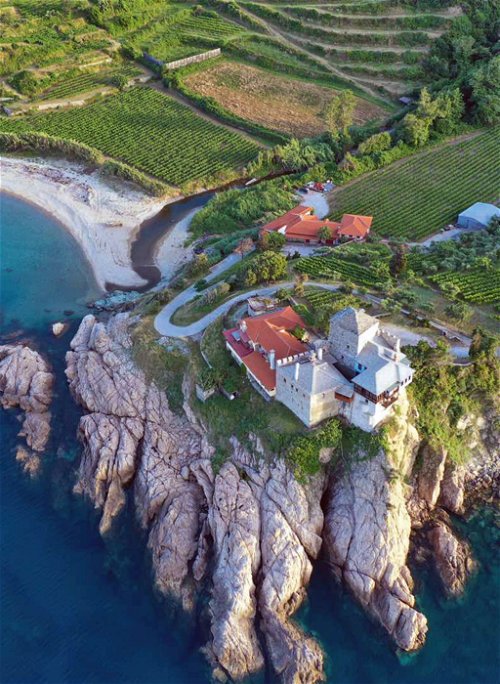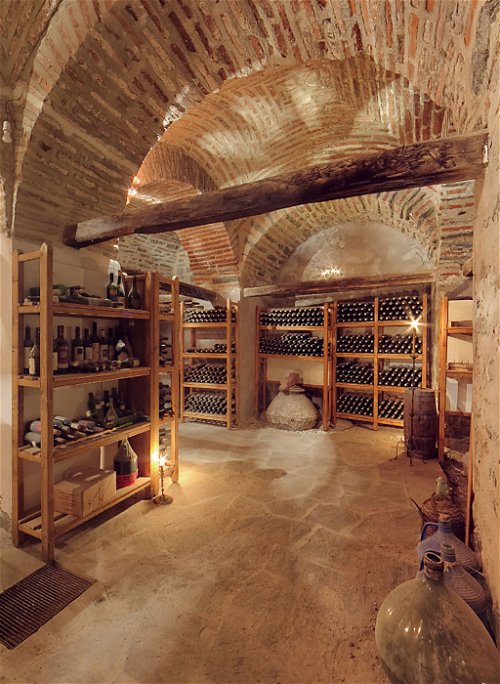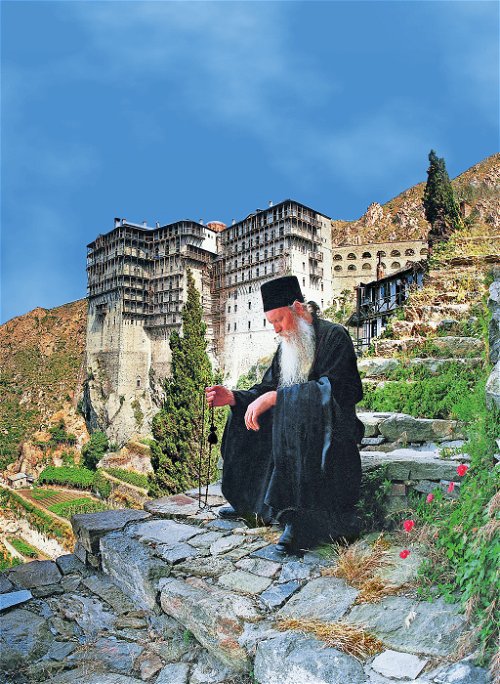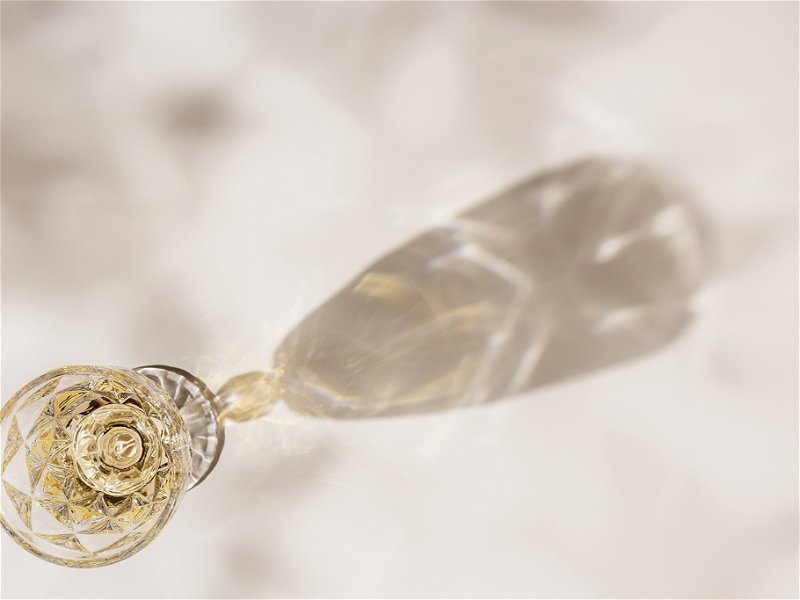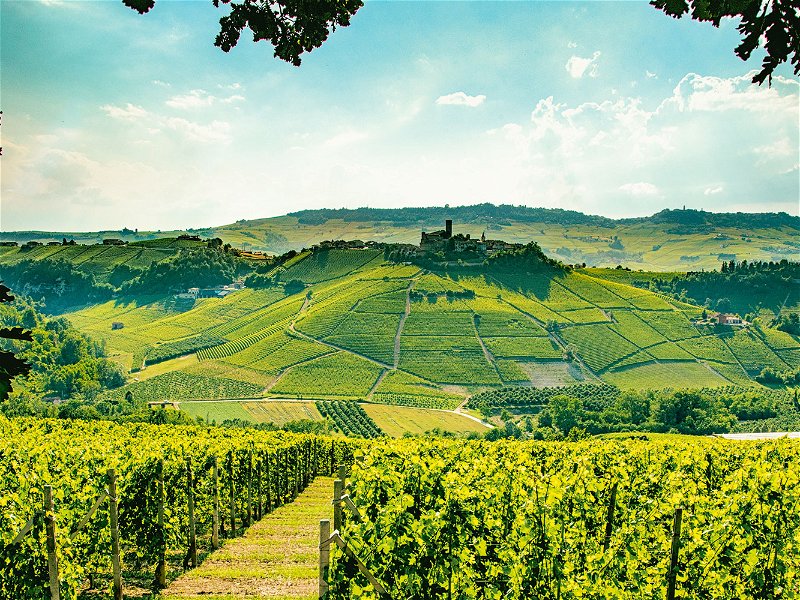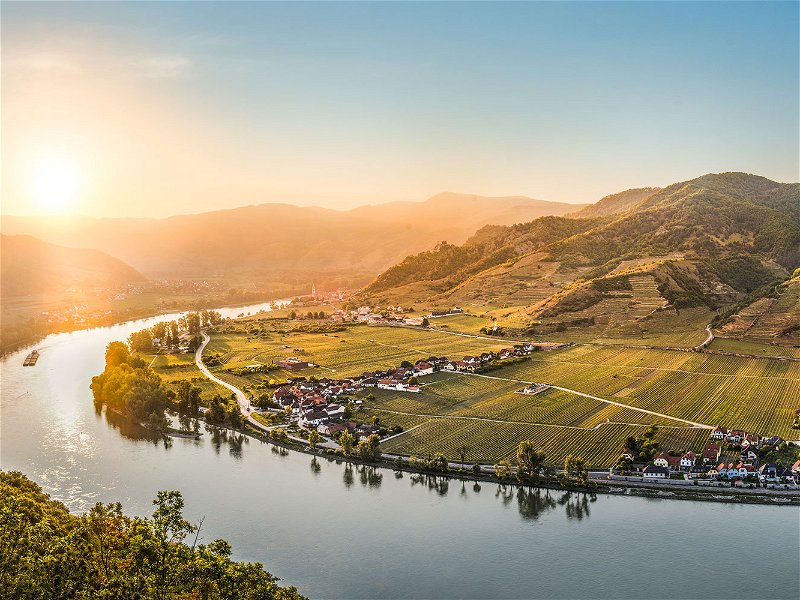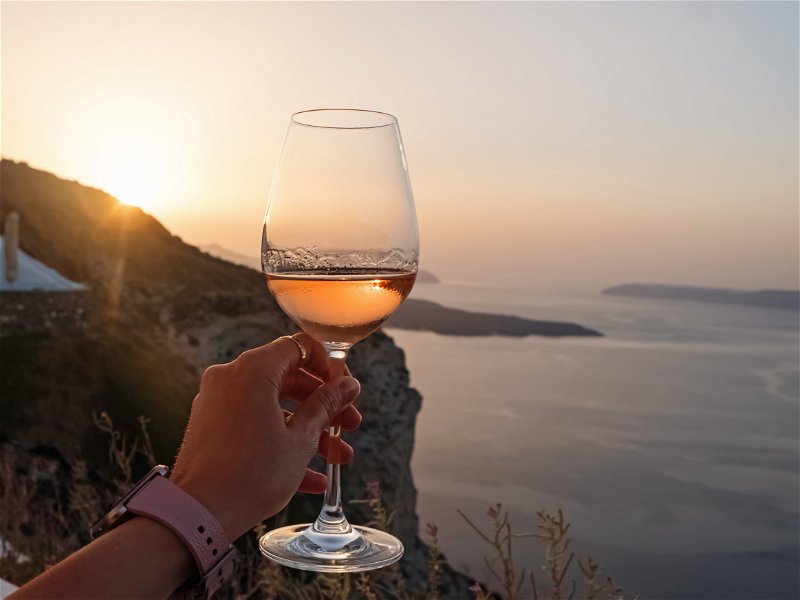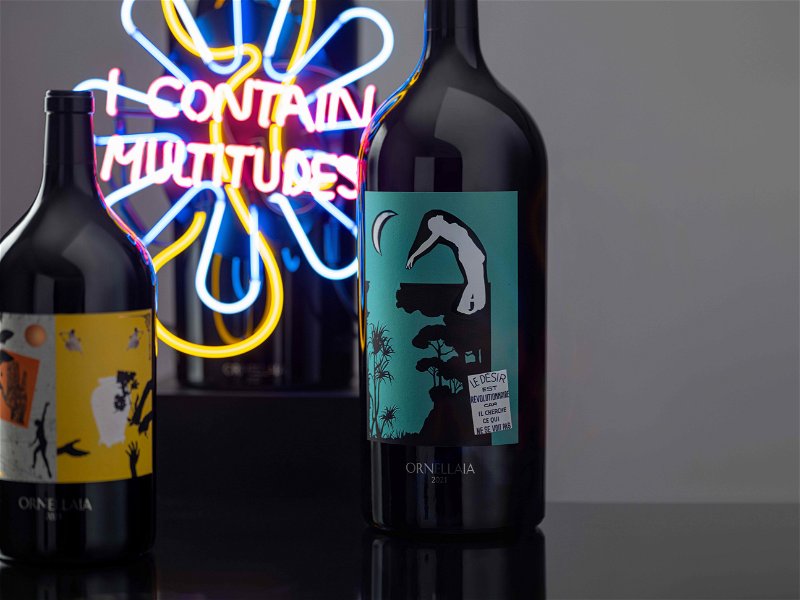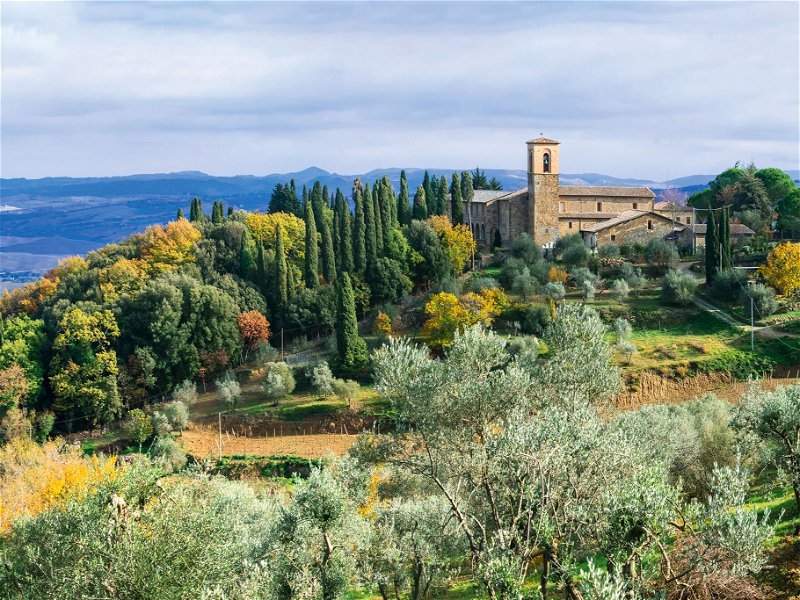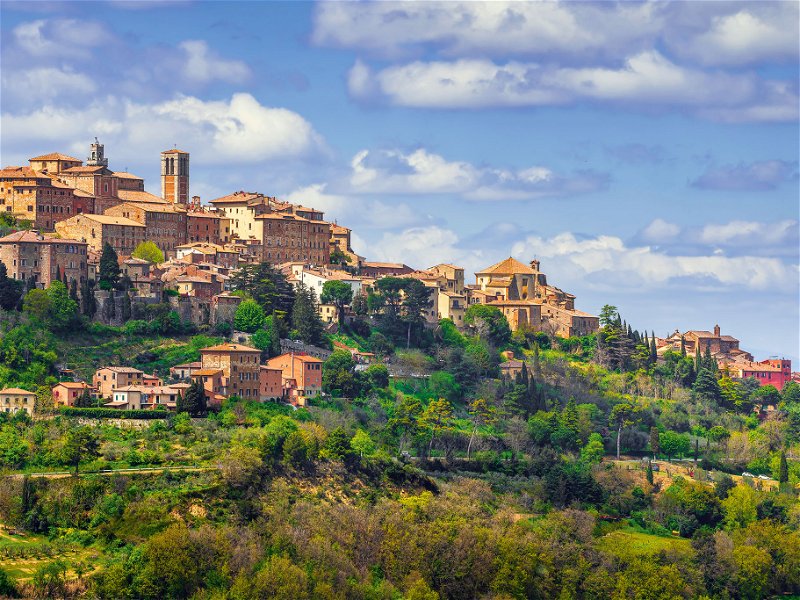Vines in the garden of the Mother of God: A journey to Mount Athos
The cultivation area of the vines, which produce the best grapes in the midst of the untouched nature of Mount Athos, is very limited. And yet the white and red wines from this tiny appellation have also achieved some fame outside of Greece. Falstaff was allowed to visit the vineyards on the Holy Mountain and was impressed by this special place.
There are just two ferry connections that take travelers to Mount Athos. At least those few who gain access at all. To be allowed to visit the imposing Holy Mountain, which rises imposingly 2,030 meters high from the sea at the southern tip of the easternmost peninsula of Chalkidiki, you have to meet a few requirements.
Mount Athos has been considered the heart of the Orthodox Church for more than a thousand years and can be compared in some respects to the Vatican City State. The monastic republic enjoys almost complete autonomy from the Greek state; the clergy living here are subject to canon law and only in exceptional cases to civil administration and jurisdiction. And: To this day, only male creatures have access – both humans and animals. The former may only enter the country with a visitor's visa that is only valid for a few days at a time; a maximum of ten foreign pilgrims and guests receive an entry permit per day. The monasteries, which are obliged to offer hospitality, take in travelers free of charge for up to three days, after which they have to leave again. Life is lived according to strict rules and the daily routine is traditional. The monks wake up at dawn and go to bed as soon as the sun sinks into the sea.
Famous monastery wine
Twenty major monasteries exist on the territory of Mount Athos today, seventeen of which are Greek Orthodox, plus one each in the Russian, Bulgarian and Serbian rites. There are also numerous tiny monks' dwellings, called skites, as well as hermitages, which often hang like swallows' nests in the steep rock faces.
We know: Where there are monks, viticulture is not far away – if the local conditions allow it. After all, it plays an important role not least in the Christian liturgy. Mount Athos also has a centuries-old tradition that can be traced back to the time when the first monasteries were founded. This is where the famous monastery wine "Monoksilitis Oinos" was created, made from the red grape variety that was first mentioned by name by ancient writers, the Limnio.
Today, white, rosé, red and liqueur wines are bottled under the PDI Mount Athos designation of origin. The most common varieties are Assyrtiko, Athiri, Roditis, some Muscat Alexandria and, in addition to Limnio and Xinomavro, the French varieties Sauvignon Blanc, Cabernet Sauvignon, Cabernet Franc, Merlot and Grenache Rouge. The monks have preserved their knowledge of viticulture over the centuries, but have also had a positive influence on the wine culture in their surroundings throughout Halkidiki.
But long gone are the days when there were more than a thousand brothers in some of the monasteries. Phylloxera, world wars, civil war and the financial crisis set in motion a downward spiral that increasingly depopulated the holy place, and the vineyards were also reclaimed by nature.
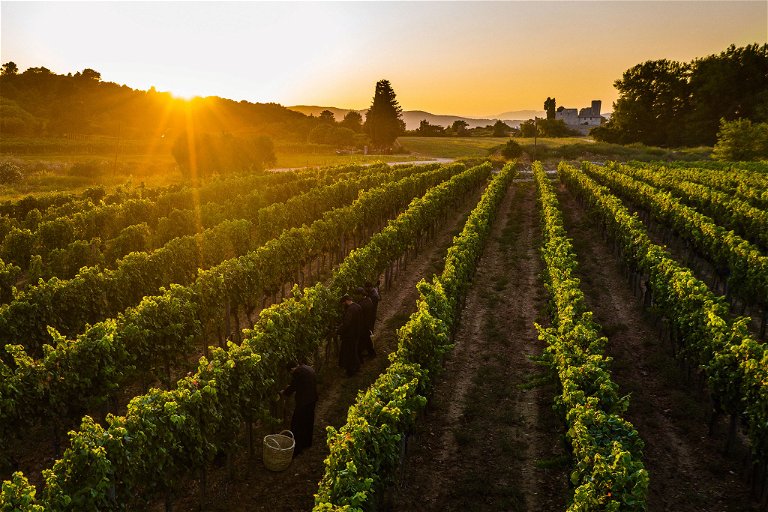
The rediscovery
It was the large wine company Tsantali that set itself the task of making the wine of Mount Athos heard and recognized again. Initially, in the 1980s, a wine called Agioritikos was developed from bought-in grapes, which quickly became a bestseller on the Greek market. In the 1990s, Tsantali was able to lease 80 hectares of suitable land from the Panteleimon monastery in Metochi Chromitsa and plant new vineyards on Mount Athos. With the increasing age of the vines, the best wines of Tsantali, which are divided into several brand groups, are produced here today. Above the popular Agioritikos, now a PDI Mount Athos, the next step in quality is the white and red Metohi, followed by the red Abaton Gold made from Cabernet Sauvignon and some Limnio. The rare top red wine called Kormilitsa Gold is produced exclusively from the oldest vines.
And because the Panteleimon Monastery is that of the Russian Orthodox Church, Kormilitsa Gold was chosen as the official wine of the Kremlin. The vineyards that Tsantali looked after on Mount Athos are located in Metochi Chromista, Kormilitsa in Russian, an estate of the Panteleimon monastery located directly on the border with Greece.
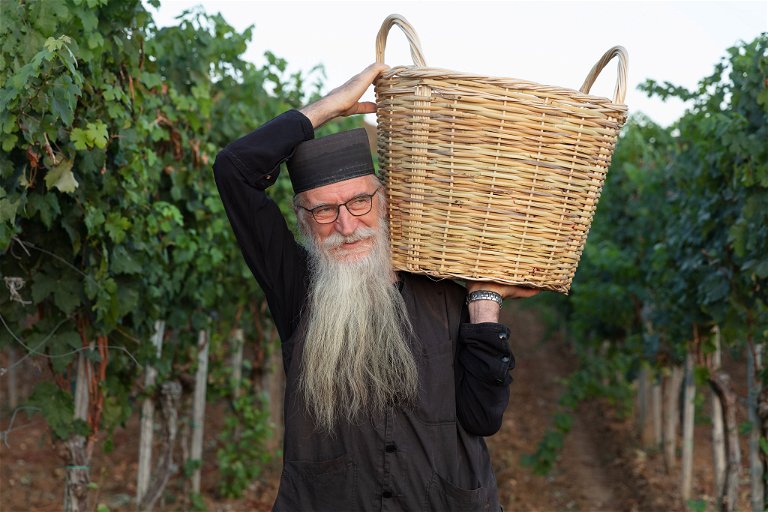
Avaton, source of life on the holy mountain
In Greek, the term avaton refers to an unreachable, completely inaccessible place – a very apt term for a product from another world. As a UNESCO World Heritage Site with over 1200 years of history, as an untouched peninsula in the middle of the northern Aegean, Mount Athos is more than just a beautiful spot on earth.
Dimitrios Babakos has managed to tap into the 35 springs of Mount Athos and is also allowed to bottle them on site. In close cooperation with the monks living there and the Republic of Greece, a unique project has been made possible. Falstaff was able to visit the monks' republic and get to know the magic of this place, which is also protected by the Natura 2000 Charter.
The springs are fed by rainwater and meltwater, the mountains rise up to 2,000 meters above sea level and are covered in snow in winter. Over the years, the water penetrates the friable diorite rock, where it is deposited at depths of up to almost 900 meters. Artesian springs bring it to light again.
As the entire republic is a completely protected area, only a very small amount of agriculture was practiced here, with livestock farming limited to a few chickens. There is also no industrial pollution here. Thanks to the lack of human intervention, there are no nitrates, nitrites or ammonium in the soil. The water is soft, has low salt levels and is therefore well tolerated by people with kidney problems. The pristine ecosystem of Mount Athos guarantees a pure drinking water experience that has only been available to a handful of monks and their few visitors since the 13th century.
This water has been available to everyone since 2021. It is bottled directly on Mount Athos in a state-of-the-art bottling plant with a very low pH value and low sodium levels.
Domestic and world varieties
Another monastery winery worth mentioning is Mylopotamos, a comparatively small organic winery run by the monks of Agios Efstathios, a monastery cell that was founded back in 973 and has probably been cultivating vines ever since. At the beginning of the 1990s, with the help of the well-known oenologist Thanos Fakorelis, who is now behind the Oeno P project in Santorini together with Paris Sigalas, a few hectares of new vineyards were planted here. Father Epifanios is the driving force behind this project – and is also the author of some respectable cookbooks. The elegant Limnio red wine with a small proportion of Merlot was also named in his honor. The range now includes a white, rosé and red wine each, as well as a semi-sweet rosé wine from Muscat Hamburg called Oenomeli and the fortified sweet wine Nama, an aromatic and tannin-rich wine made from Muscat Alexandria and Merlot. At the top is the Mylopotamos Epifanis, a Limnio matured in French barriques, which has already won international awards.
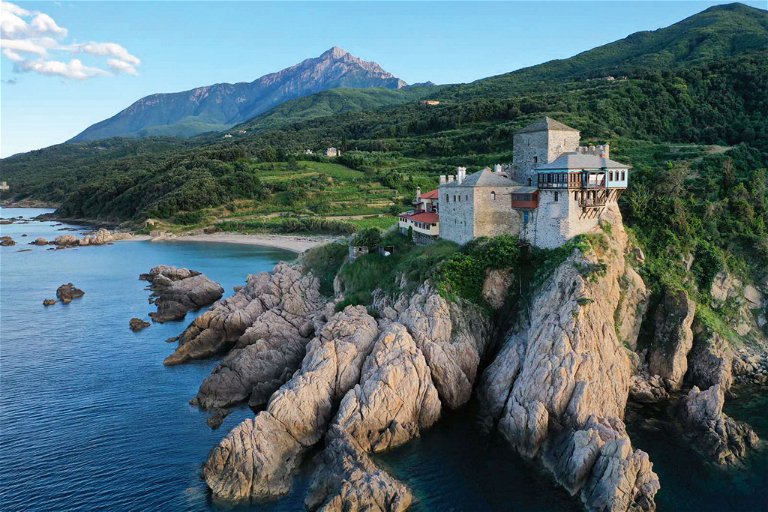
ora et labora
The quality of the Serbian Orthodox Hilandar Monastery is remarkable. The Bordeaux blend called Saint Sava's Field is at the top, the best rosé on the peninsula comes from this vineyard. The entire range from the Simonos Petras monastery, which is marketed under the name Metochi Donta, was of strikingly good quality. Metochia are the estates or branches that a large monastery cultivates. The brothers have enlisted the support of a star winemaker from the region, Evangelos Gerovassiliou, and the wines are of striking quality and also very reasonably priced. Among the other monastic communities that market bottled wines – including mass wines and sweet wines – is that of the Holy Grand Monastery of Vatopedi, where the focus is on French varieties such as Sauvignon Blanc, Syrah, but also Merlot and Cabernet Sauvignon. Other monasteries on Mount Athos that are prized for their viticulture are Dochiariou, Saint Nicholas, Karakallou and Xenofontos, where, in addition to wine, a variety of other products are produced, including icons, pharmaceuticals and foodstuffs ranging from olive oil to honey and seasoning salt.

Travel information
Anyone who wants to visit Mount Athos has to go through a complex procedure: Men (and only men) can apply for an entry permit ("Diamonitrion") – at the earliest six months and at the latest two weeks before the desired date. This can only be done by calling the pilgrims' office of the Holy Community of Athos in Thessaloniki on +30 2310 252578. If the appointment has been confirmed, it must also be requested by e-mail to athosreservation@gmail.com. Do not forget a copy of your passport! For overnight stays, you must contact the monasteries. Arrival must be confirmed at the Thessaloniki Pilgrims' Office two weeks before the visit, otherwise the reservation will expire! Last but not least: in good time
arrive at the pilgrims' office and collect your visa.
Don't miss out!
Sign up now for our newsletter.

